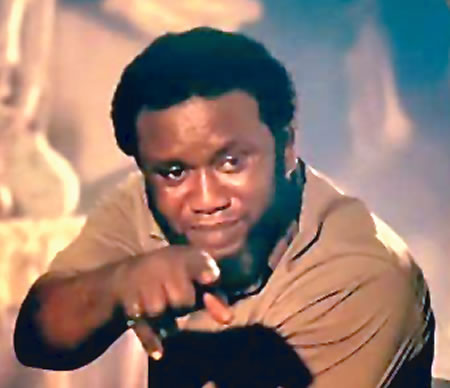In this interview with SEGUN ADEBAYO, award-winning art director Tunji Afolayan opens up about his journey working on the acclaimed Netflix series Seven Doors. He shares insights into his creative approach to production design, his collaboration with the show’s producers and directors, and the challenges he faced in bringing their vision to reality.
WORKING on Seven Doors must have been an incredible experience. Can you share your thoughts on it?
Working on Seven Doors was undoubtedly a challenging yet profoundly rewarding experience. As the art director, my role was to breathe life into the producers’ and directors’ vision, ensuring that every set reflected the narrative’s depth and authenticity. It was a true collaboration of creative minds, and seeing the final product made me incredibly proud of what we achieved.
Your sets on Seven Doors were truly iconic. Can you walk us through your design process?
Thank you! My approach to set design always begins with immersing myself in the script and the world it portrays. For Seven Doors, it was essential to understand the story’s essence and translate that into physical spaces. I worked closely with the producers and directors to capture their vision. From the ethereal atmosphere of the Ipebi to the raw, mystical energy of the Aganju Shrine, each set posed unique challenges. We experimented with textures, colors, and lighting to evoke the right emotions. Watching it all come together on screen was exhilarating.
You’ve worked on numerous projects, including Jagun-Jagun, Amina, and King of Boys. What drives your passion for production design?
Storytelling drives me. I’m passionate about creating spaces that not only complement the narrative but also draw viewers deeper into the story. For me, set design isn’t just about constructing a backdrop—it’s about crafting an atmosphere that enhances every scene and resonates with audiences long after the credits roll.
Netflix recently announced its decision to stop funding Nollywood producers. As a stakeholder in the industry, how do you respond to this development?
Netflix’s decision is undoubtedly a wake-up call for Nollywood. It highlights the urgent need for us to create local solutions. We can’t rely solely on international platforms for funding and distribution. This is an opportunity to take ownership of our content by investing in homegrown distribution networks, streaming platforms, and marketing strategies that speak directly to our audience.
That’s a valid point. What do you think is the way forward for Nollywood in terms of distribution and marketing?
We need to prioritize building our own infrastructure. Imagine having Nollywood-owned cinemas and streaming platforms that cater to African stories. Local marketing campaigns should also tap into the cultural nuances of our audience. We have the talent and the stories—it’s time we take full control of how they’re shared with the world.
Another challenge is preserving cultural heritage, especially for period movies. What difficulties have you faced, and how have you overcome them?
This is a significant issue. A lack of preserved cultural artifacts often forces us to be resourceful. For example, when working on Jagun-Jagun, we had to recreate a 19th-century village from scratch. Without access to authentic locations, we relied heavily on research and imagination, blending traditional craftsmanship with modern techniques to bring the vision to life. It was tough, but the result was immensely fulfilling.
Filmmakers behind the camera, like art directors and cinematographers, are often not celebrated enough. What’s your take on this?
It’s true. While actors and directors are celebrated, the behind-the-scenes contributors often go unnoticed. Yet, every frame of a film reflects the hard work of countless individuals. Recognition of these efforts would not only boost morale but also inspire more people to join these critical roles.
How important is funding in movie projects?
Funding is everything. It dictates the scale, quality, and reach of a project. Without adequate resources, even the best ideas can fall short. That’s why sustainable funding sources are essential for Nollywood’s growth.
What inspired you to become an art director instead of an actor?
I’ve always been captivated by the magic of creating worlds behind the scenes. As an art director, I have the privilege of shaping the visual language of a story. It’s incredibly fulfilling to see audiences transported by environments I’ve helped create.
Tunji, have you received any award for your hard work in the industry?
Yes, I was honored with a nomination for Best Art Direction at the Africa Magic Viewers’ Choice Awards (AMVCA) 2024 for my work on Jagun-Jagun: The Warrior. Recognition like this inspires me to keep pushing boundaries in Nollywood.
READ ALSO: Entrepreneurship will tackle Nigeria’s economic challenges





